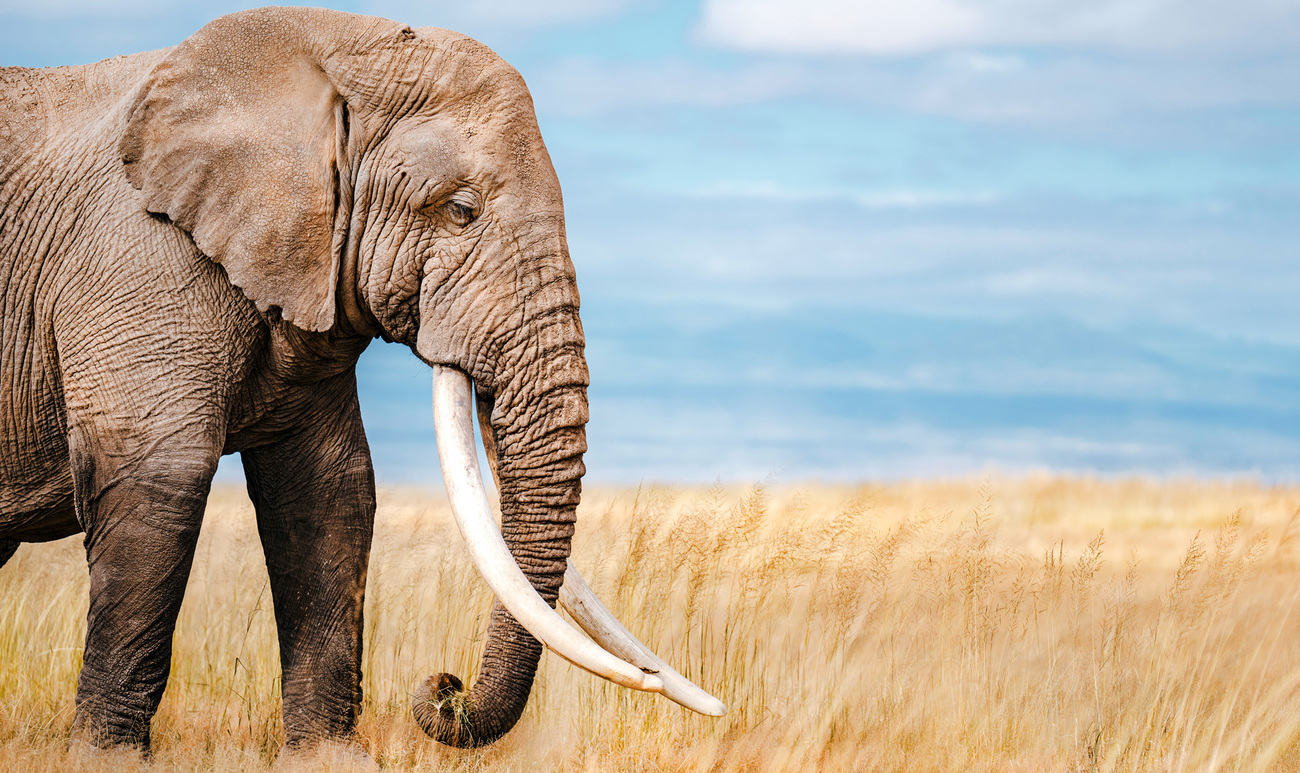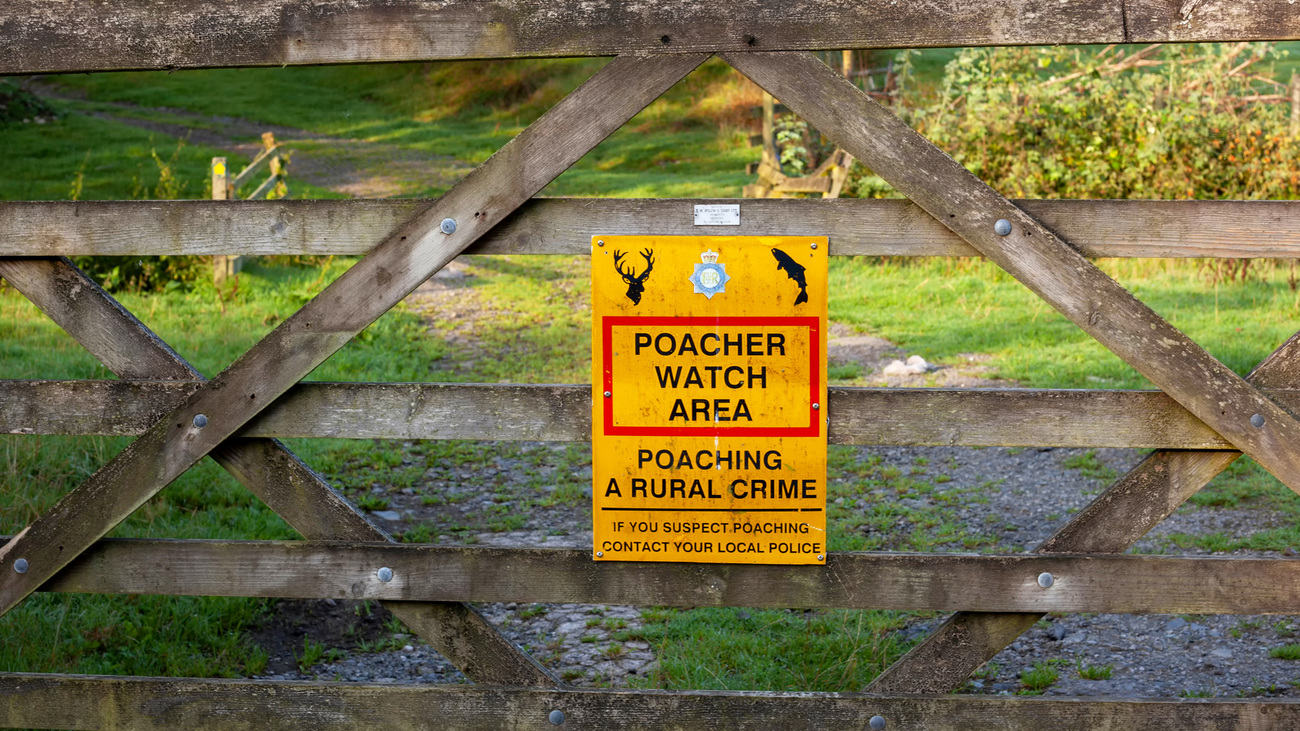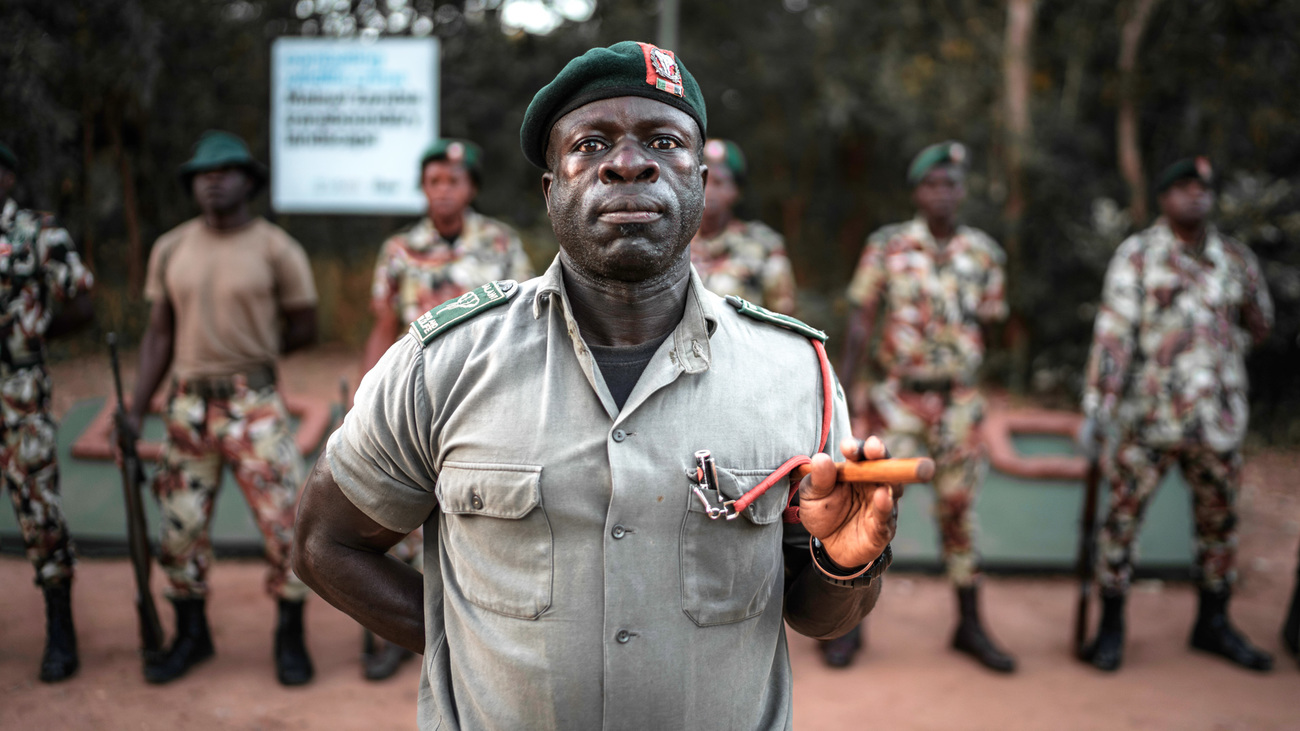Wildlife crime is one of the largest criminal enterprises in the world. Poaching, which is one form of wildlife crime, is one of the biggest threats many animals around the world face. Some well-known examples of animals that are poached are elephants for their ivory tusks and rhinos for their horns, but there are many lesser-known examples as well.

The definition of poaching is not always made clear. In simple terms, poaching is defined as the illegal hunting or capture of animals that are not one’s own. Let’s take a deeper dive into what poaching is and how it impacts animals around the world.
What does poaching mean?
Poaching is the illegal hunting or capture of animals that are not one’s own. In many cases, poaching involves killing animals with the intent to acquire their meat, horns, scales, or other body parts. In other cases, poaching involves the live capture of animals, which are then trafficked for the illegal exotic pet trade, for use in entertainment or tourism, and for other exploitative purposes such as the extraction of bile from bears.
Any species that is protected by law or belongs to someone could be a victim of poaching. It’s not just animals that are poached—plants can be poached, too. Some trees are poached for their timber, and some smaller plants, like Venus flytraps, are poached and traded commercially for decorative purposes.
Poaching can also include fish and other aquatic or marine animals. In maritime law, poaching refers to illegal fishing or hunting in the water. Fishing may be illegal in certain areas due to restrictions placed in territorial waters by specific nations, or it may be illegal to hunt certain fish species at specific times of the year or in numbers greater than determined quotas.
Why does poaching happen?
There are a number of reasons why poaching exists. Demand for animals and their parts is at the root of the issue—if no one sought out poached species, there would be no reason for poachers to hunt or capture them in the first place.
This demand arises for several reasons. First of all, many animals are poached for bushmeat, which is defined as the meat from wildlife species that are hunted for human consumption. Bushmeat comes from a variety of sources, including apes, monkeys, pangolins, snakes, and giraffes. In some remote areas, bushmeat is the only reliable source of protein for people. This means many communities rely on the hunting of wild animals. This hunting is often done illegally, so it is considered poaching.
Poaching also happens in the ocean for similar reasons. Many fish species have depleted populations that won’t rebound if they continue to be hunted in large numbers, so countries place restrictions on hunting them at certain times of the year or above a certain quota. However, fish are an important protein source in many communities, so illegal fishing is a common occurrence. Sea turtle eggs are also often taken illegally for food.
There is also demand for animal and plant parts in traditional medicine. In some cultures, certain animal parts—such as elephant ivory or tiger bone—are believed to hold medicinal value. They are often ground into powders and combined with other ingredients, and these substances are used to treat various ailments. Animal parts may also be used as aphrodisiacs or as dietary supplements for other purposes.

Many animals are poached so their parts can be used for decorative or ceremonial purposes. Tiger skins, for example, are considered a luxury decorative item in some cultures. Ivory from elephants is used in dagger handles, carvings, and other types of ornamentation—in the past, it has also been used to make piano keys. Some species of fish, mammals, and reptiles are poached to make clothing, shoes, and handbags. Often, the use of animal parts in luxury items is considered a symbol of high status.
The poaching of live animals is often driven by the exotic pet trade. Many wild animals, including primates, big cats, turtles, birds, frogs, and others, are prized highly as pets, despite the dangers they pose to humans. Because they are not domesticated, these animals have needs that typically cannot be met in captivity. Their care is expensive, and they can easily outlive a dog or cat, with some exotic pets even outliving their owners. In trade, these animals are often badly treated, and many die in the process. Many animals are poached for the pet trade when they are very young, and this often involves the slaughter of their parents, such as in the case of orangutans.
Besides demand, another cause of poaching is the needs of poachers themselves. It’s a complex issue, as many poachers rely on it as a source of income, especially in places that are impacted by drought, poverty, and human-wildlife conflict.
Compounding the issue, there is often a lack of funding for measures that could prevent poaching, such as the creation and maintenance of protected areas and a lack of support for wildlife rangers.
How is poaching done?
Poaching is done through a variety of means. It is typically a highly organized crime involving large international networks of people. Animals and their parts are trafficked similarly to how drugs, weapons, and people are trafficked.
Some poachers use weapons to directly attack animals, while others set traps or snares. Often, traps and snares impact animals that aren’t the direct targets of poachers. The live capture of animals often results in the deaths of non-target animals, such as a young ape’s parents.
What is the history of poaching?
Before the 20th century, in feudal Europe, the upper-class landowners banned hunting on their properties for all individuals except themselves. Lower-class peasants, who typically did not have any land, illegally hunted on these properties for subsistence, meaning they relied on it as a protein source. Poaching became a serious crime with harsh punishments, as the landowners did not want their game supply depleted.
Nowadays, poaching is typically done for sport or for profit. Rather than individuals hunting for subsistence, poaching is most often performed by large, highly-organized international criminal networks. Poached animals and their parts are trafficked around the world, and since the rise of the Internet, wildlife trafficking now occurs online, too.
Why is poaching an issue?

Poaching becomes a major problem when it reaches unsustainable levels, meaning more animals are being killed or taken out of the wild than can be replaced. This threatens the survival of animal and plant species, many of which are already vulnerable or endangered.
Not only does poaching pose an existential threat to individual species, but it also threatens global biodiversity. We need biodiversity to have a healthy planet and to support the strength and functioning of ecosystems everywhere. As humans, we also rely on biodiversity, as animals, plants, and other organisms to provide vital ecosystem services like food, water, soil, and clean air. Preserving biodiversity is crucial for capturing carbon and mitigating climate change.
Poaching is also an animal welfare issue. It’s incredibly painful and traumatizing for an animal to have its tusks or antlers cut off, to be ripped away from its family, or to witness the death of its parents. Experiences like these, even if the animal does survive, can affect it for the rest of its life.
Poaching doesn’t just kill individual animals. It also destroys the lives of non-target animals, harms their ecosystems, and threatens the wildlife rangers who work to protect them.
How can we stop poaching?

Ending poaching requires the participation of governments, parks, corporations, international organizations, and communities.
Strengthening enforcement is one key way to stop poaching. IFAW works with local communities and wildlife rangers, providing training, mentorship, equipment, and infrastructure to wildlife authorities, border agents, and other law enforcement officials. We also gather and analyse information about criminal networks and support the planning of law enforcement operations by government officials.
In the long term, it’s also necessary to reduce demand for wild animals and their parts. We do so by educating communities about the illegal wildlife trade, the dangers of exotic pets, and how to avoid the products that result from poaching.
Additionally, IFAW works to disrupt wildlife cybercrime. This can only be done with the cooperation of large technology companies and governments. We’re working to catch cybercriminals and make it more difficult for them to trade wildlife and their parts online.
We also work to shape policy surrounding wildlife protection around the world. Many countries may have laws or protected areas in place to protect animals, but they don’t direct enough funds towards enforcing these protections. In addition to working in source countries, we also perform policy work in trafficking hubs and consumer countries to deter the demand for poached animals.
As one root cause of poaching is a need for income, IFAW also works with communities to find alternative, wildlife-friendly livelihoods, and we educate communities on the importance of wildlife and biodiversity.
Lastly, we support those who work on the front lines to combat poaching before it occurs. Wildlife rangers have incredibly dangerous jobs. They do the necessary work to prevent animals from being hunted or caught in snares. IFAW provides support to wildlife rangers to improve their lives, which in turn saves the lives of countless wild animals.
Related content
Our work can’t get done without you. Please give what you can to help animals thrive.